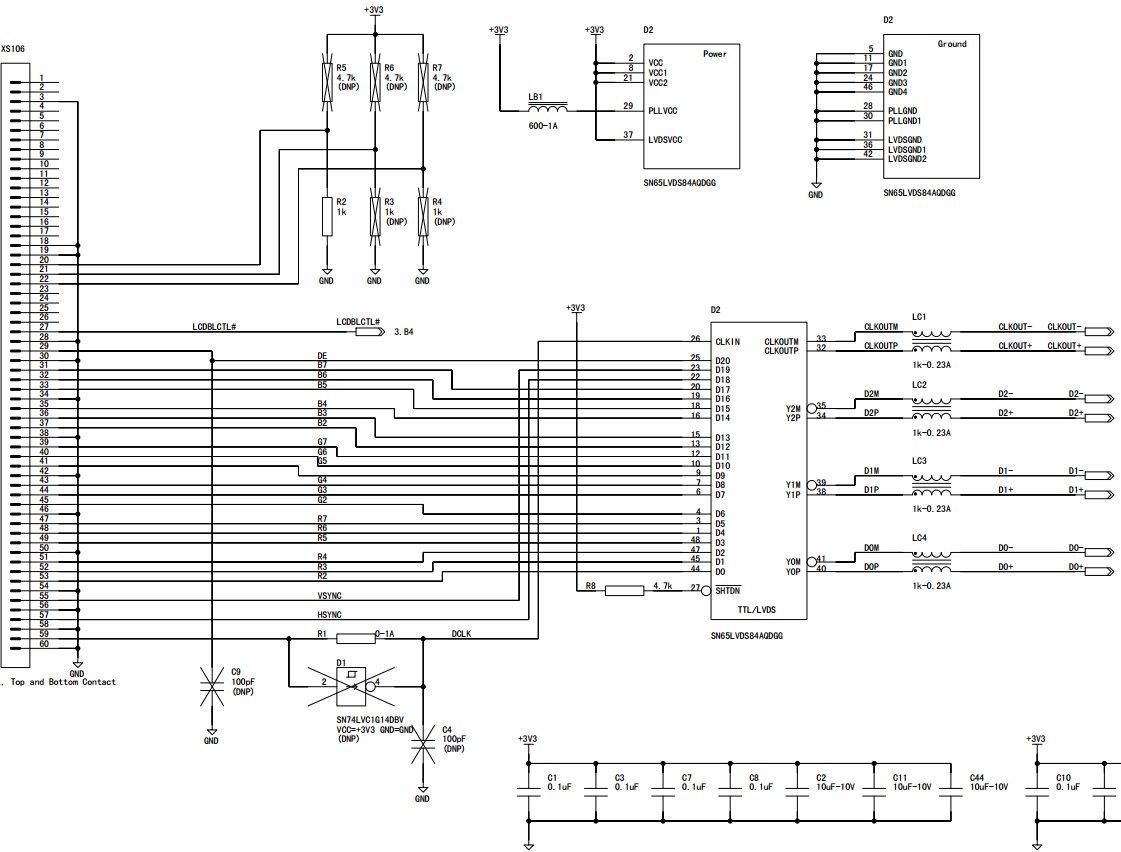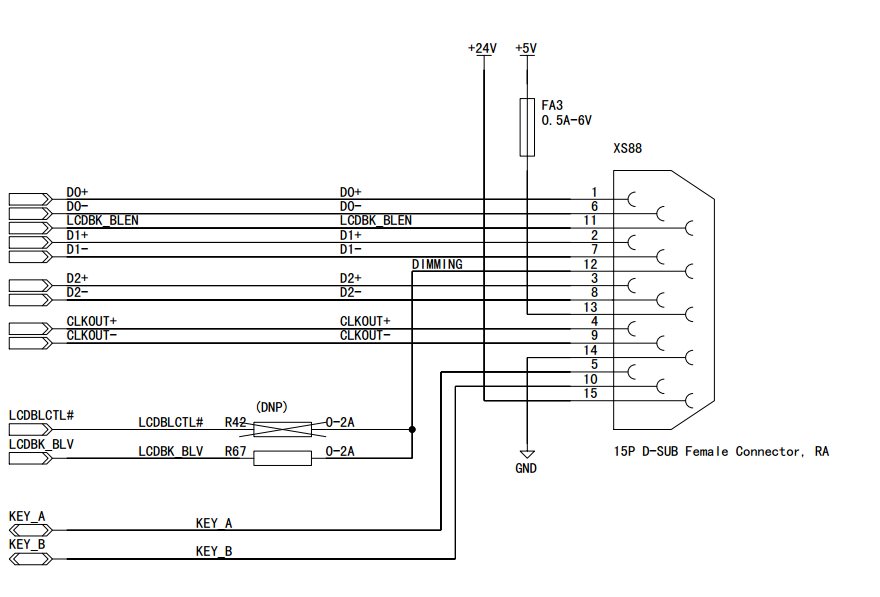Other Parts Discussed in Thread: TPD2E001
Dear Pros,
1.Application:
"The LCD screen is separated from the host, and an SN65LVDS84AQDGG chip is used on the host side for output to the interface. The length of the outer cable (twisted pair with shielding) is less than 1 meter, and the other end is connected to the display module."
What's wrong with that? Any doubts or recommendations?
We have done some experiments, and now it is confirmed that this chip is very easy to be damaged during hot plugging. Is there any solution for consultation?We have tried to add 4 TPD2E001 TVS to 4 sets of differential signals, which will still be damaged.
The LCD signal switching chip of RGB to LVDS, SN65LVDS84AQDGG, has been damaged quite a lot recently, including 6 pieces in dozens of sets.
2.The circuit part is very simple, please refer to the attached picture.
The broken chip is basically due to abnormal impedance between LVDS differential pairs. For example, the resistance between Y0M/Y0P may be more than 10 ohms, several hundred ohms, or several megabytes.Resistance to earth is also small and large, ranging from more than 10 ohms to megohm.
Try replacing the common-mode inductor with a 10 ohm resistor, and then add TPD2E001DZDR, 4 pieces, and it still doesn't work. 


